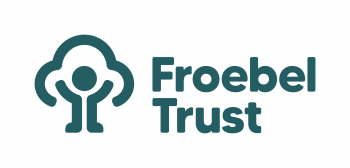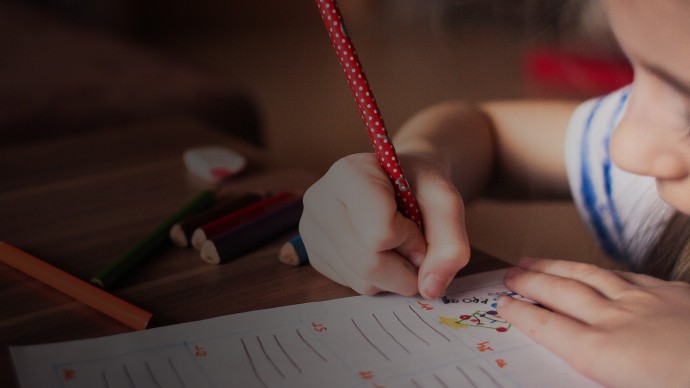
Thinking in action: the Listening-2 project
As children, we’re always seeing things differently. As adults, how can we see the world in unique ways? Research from Manchester Met has discovered that slow-motion video can help us to understand how children relate to the world through their bodies and their senses.
About the Listening-2 project
The ‘Listening-2’ project was conceived almost by chance in 2019. At this time, research fellow Dr Christina MacRae was spending one day a week at Martenscroft Nursery School and Children’s Centre in Manchester. This was part of a research project focusing on the sensory aspects of two-year-olds’ activities.
As she was working alongside nursery practitioners, Christina discovered that slow-motion videos revealed interesting insights and allowed them to see things slightly differently. This planted the seed of inspiration for a new project that would use slow-motion film as a methodology for paying attention.
“I’m interested in how we respond to the world – the spaces, the places, the things that we encounter,” Christina said. “So, focusing on the role of the body in thinking, and the idea that we think in action. Thinking in action becomes really foregrounded when you use slow motion, so that was the idea behind the project.”
A key difference was that we wanted to design this project more explicitly around parents as co-researchers.
Froebel’s thinking
To take the project forward Christina teamed up with Professor Maggie MacLure. The work of German thinker Friedrich Froebel was key to the research design and in 2019, the duo secured funding from the Froebel Trust.
A large part of the planning phase was dedicated to revisiting Froebel’s thinking and exploring its relevance to current times. The researchers drew particularly on Froebel’s beliefs about how young children engage with the world uniquely, and the value of intimacy and lived knowledge in parenting. “Making this intimacy visible was one of our objectives,” Christina explained.
“Froebel’s approach was slightly different to many of the ‘big names’ in early years theory and practice. He believed that through intimacy, parents can continually learn with and from the child, because of the simple fact that they live together. Listening to children through slow-motion therefore answers Froebel’s call to learn to live with our children.”
I'm interested in how we respond to the world – the spaces, the places, the things that we encounter.
Finding new ways to do research
The research duo co-created new methods for making slow-motion recordings of two-year-olds as they went about their everyday lives in the nursery, at home and out of the house. They used GoPro cameras, which can be head-mounted to shoot point-of-view footage.
This approach enabled them to expand on the idea that listening is more than simply hearing words and sounds. Instead, the team thought about listening as something that involves all our senses, as well as being a way of paying attention to and reading other bodies.
Close collaboration
The classroom research took place at Martenscroft Nursery School and Children’s Centre in Manchester, which offers private and government-funded nursery places.
As co-researcher, Christina positioned herself as an observer in the classroom and went into the school twice a week for data collection.
Crucially, the footage was collected collaboratively with parents and staff. Both groups were invited to become co-researchers and contribute film clips of everyday events.
“My previous project had a similar ambition as a piece of ethnography – an approach that involves immersing yourself in the lives and values of the communities involved, and trying to understand the world from their point of view. I had regular contact with the children for a year as a researcher in the field,” Christina said. “But a key difference was that we wanted to design this project more explicitly around parents as co-researchers.”
The school corridor unexpectedly became a productive, informal space for sharing ideas and experiences. “I would spend half a day in the classroom, alongside children and staff,” Christina said. “I would spend the other half uploading film footage and hanging out in the corridor, where I was available to talk to parents, lend out GoPros, watch films that they shared, or contribute to the project archive.”
Children are talking with their bodies, and we overlook this.
Covid-19 complications
Unfortunately, field visits ceased in March 2020 due to lockdown, although contact with the school and some parents was maintained.
The effects of the pandemic were challenging for the inner-city nursery and the community it serves. At various times, it found itself at the centre of surges and new variants, and the nursery community was touched by illness and loss.
Settings such as the nursery were also at the frontline of family support services and had to respond to the complex needs of families. Staff therefore had to prioritise maintaining these services.
“We intended to work collectively with parents and practitioners at the end of the project to analyse and select key clips, but unfortunately this was not possible,” Christina said. “However, during the first lockdown and beyond, several parents and practitioners continued to show a lively interest not only by recording videos on their own phones, but also by becoming more involved in analysing and writing about the research.”
Analysing the findings
The data analysis was undertaken collectively. Watching slow-motion video data with the parents and nursery staff produced a keener awareness of the dynamics of children’s bodies moving responsively, and the team could observe slight changes and micro-movements.
One parent said that watching film in slow-motion made her subsequently slow down when she was with her daughter, Anna, and “pay more attention to the different shades and forms of movements Anna performs on a daily basis like jumping around, spinning or playing.”
An early years practitioner added: “Only when the video is in slow-motion – and even then I had to watch it again a few times – was a little bit more detail picked up. I noticed more about the in-the-moment connections children are making with the materials they were playing with.”
We need to actually listen to children's bodies and the way they respond to one another without words, and not worry as much as we do about their speech.
“The innovative slow-motion video methodology offered an enhanced attentiveness to the sensory-motor dimensions of events,” Christina said. “We developed the concept of ‘watching’ as a way of engaging with children’s activities, which was distinct from observational practices in both research and early years education, which always prioritise sight and the visual dimension of events.”
“Slow-motion watching focused our attention on the dynamics of motion itself and the responsivity of moving bodies to things encountered. As we watched video clips repeatedly, we became aware of how vision also taps into other senses such as touch and bodily sensations, such as the way we come to “know” the world through our muscles and joints.”
Christina and Maggie have developed this idea in a paper that highlights the unfolding relationality at the heart of movement, and Froebel’s belief that force and matter mutually condition each other.
A new perspective: more than words
The project resulted in a new resource for practitioners that could transform how we approach so-called language ‘delay’ in the early years. This was informed by feedback from practitioners and parents.
“There’s a big emphasis on language delay and children who don’t speak, and how we can get children to talk more. Because we worry about their speech, there becomes this adult tendency to talk at children more. This maybe stops them from listening and seeing what children are communicating with their bodies and their senses.”
I noticed more about the in-the-moment connections children were making with the materials they were playing with.
“Our research does something quite different because it’s almost saying, actually, children are talking with their bodies, and we overlook this,” Christina explained. “So we need to actually listen to children’s bodies and not worry as much as we do about their speech. In this sense, the research runs against the tide of anxiety around children, particularly about them becoming school ready. It takes a slightly different view.”
Future plans
Christina hopes to explore Froebel’s ideas about learning through the body further. The research showed how productive it is to listen to children through their bodies, so the team is also thinking about how the arts – particularly performance arts – could provide interesting insights into how young children learn.
“We’re realising that a lot of performing arts skills, which range from contact dance and clowning to improvisation, are key if you want to understand and communicate with very young children,” Christina said. “So, we’re beginning to think about how this expertise could be important for theory and practice in the early years. It’s an interesting aspect that we’d love to be able to develop more.”
Overall, the research succeeded in its aspirations. It made an original contribution to video methodology in research involving children and helped to strengthen the theoretical base of early childhood research. It also reasserted the significance of Froebel’s legacy for contemporary inquiry into the material and sensory dimensions of childhood.
The project formed part of Manchester Met’s collaborative ‘Birth to three’ research programme, which has been transforming the curriculum and pedagogy for young children for over 20 years.
Supported by

Froebel Trust
Lead academics and research group
Lead researchers
-
Dr Christina MacRae
Research Fellow
-
Professor Maggie MacLure
Emeritus Professor




